Uneven Tire Wear: Causes, Prevention, and Fixes
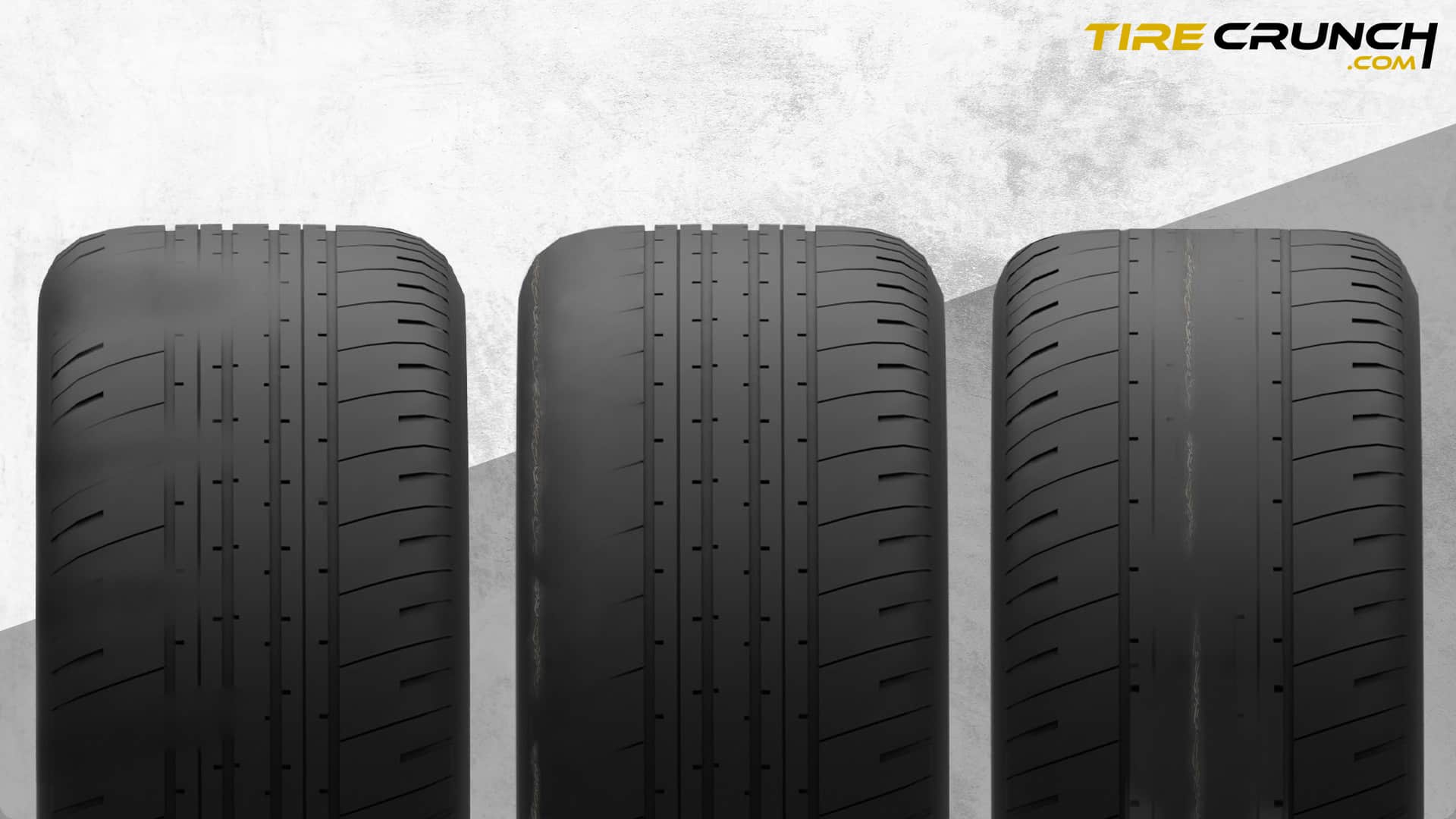
Have you ever noticed uneven wear on your tires? Uneven tire wear can be caused by a variety of factors, from improper tire inflation to worn suspension components. If left unaddressed, it can lead to reduced fuel efficiency, decreased handling and control, expensive tire replacement costs, and increased risk of accidents.
In this blog post, we will delve into the causes and impacts of uneven tire wear and provide tips on how to prevent and fix it. So buckle up and read on!
Key Takeaways
Understanding The Causes Of Uneven Tire Wear
Knowing the causes of uneven or irregular tire tread wear can help you identify problems early and take action before it leads to costly repairs or safety issues.
Improper Tire Inflation

Improper tire inflation is one of the leading causes of uneven tire wear. When tires are overinflated or underinflated, they will experience uneven pressure distribution which eventually leads to damage on specific sections of the tread.
Overinflation can cause excessive wear and tear on the center tread section, whereas underinflation will lead to outer edge wear.
Misaligned Wheels

Misaligned wheels are a common cause of uneven tire tread wear. When the wheels are not properly aligned, the tires will wear unevenly and prematurely.
This is because misalignment causes one or more of the tires to drag, putting more pressure on certain parts of the tire tread than others.
Common signs of wheel misalignment include pulling to one side while driving, and steering wheel vibration.
Worn Suspension Components
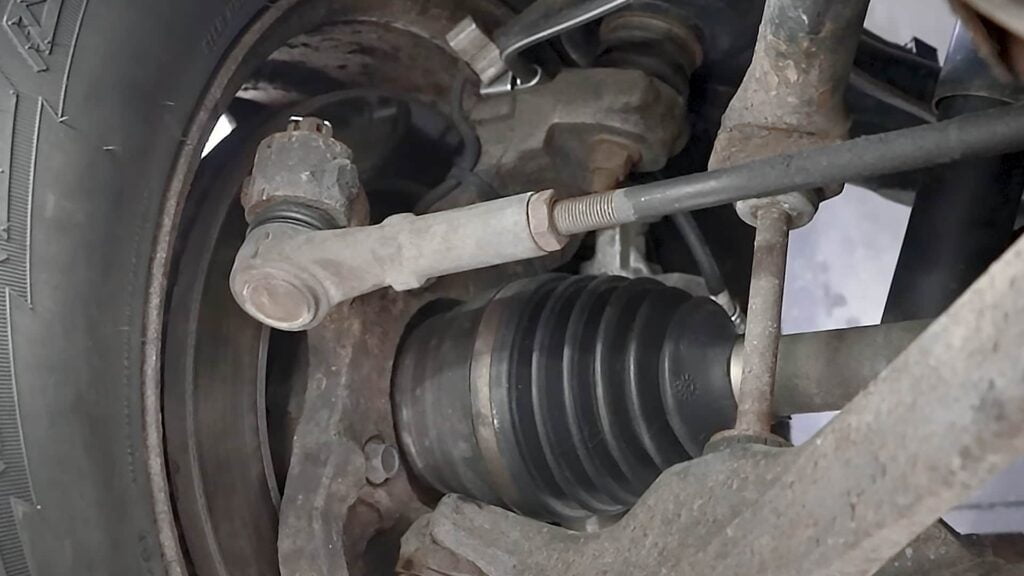
Suspension system parts such as shocks, struts, ball joints, and tie rods help to keep the tires properly aligned. Over time, these parts can become worn or damaged, leading to tire wear issues.
If your vehicle’s suspension is worn out or damaged, it may cause certain portions of the tires to rub against the road surface more than others.
This kind of rubbing can result in patterns such as cupping or feathering on your tire treads.
Driving Habits

Your driving habits can greatly affect the life span of your tires. Aggressive and frequent braking or accelerating, speeding, and taking tight turns at high speeds all contribute to uneven and accelerated tire wear.
These bad driving habits cause greater friction between the tire surface and the road which in turn leads to faster deterioration of the tire tread.
Unbalanced Wheels
When the weight of a tire is not evenly distributed around its circumference, it causes the tire to rotate at an irregular rate. This can lead to excessive wear on one side of the tire, resulting in uneven tread depth and reduced traction.
Uneven tire tread wear can also lead to poor fuel economy, vibration in the steering wheel, and increased risk of blowouts or other tire-related accidents.
Types Of Uneven Tire Wear
1. Center Wear
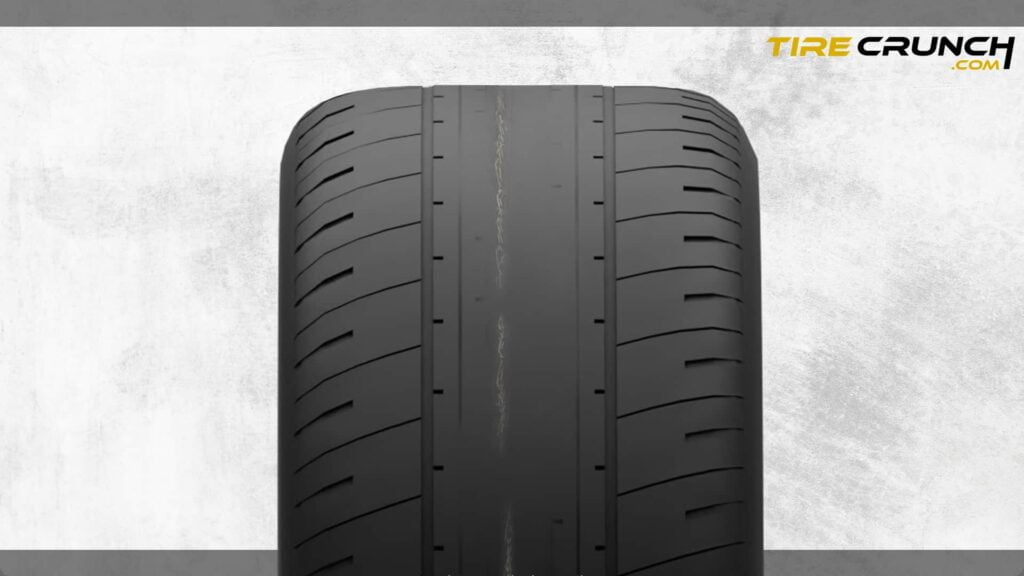
If you notice your tires are not wearing evenly, specifically they are wearing down the center rather than on the sides, it could be from an overinflated tire. When tires are overinflated, they tend to bulge in the middle, leading to uneven wear and tear when driving.
2. Side Wear
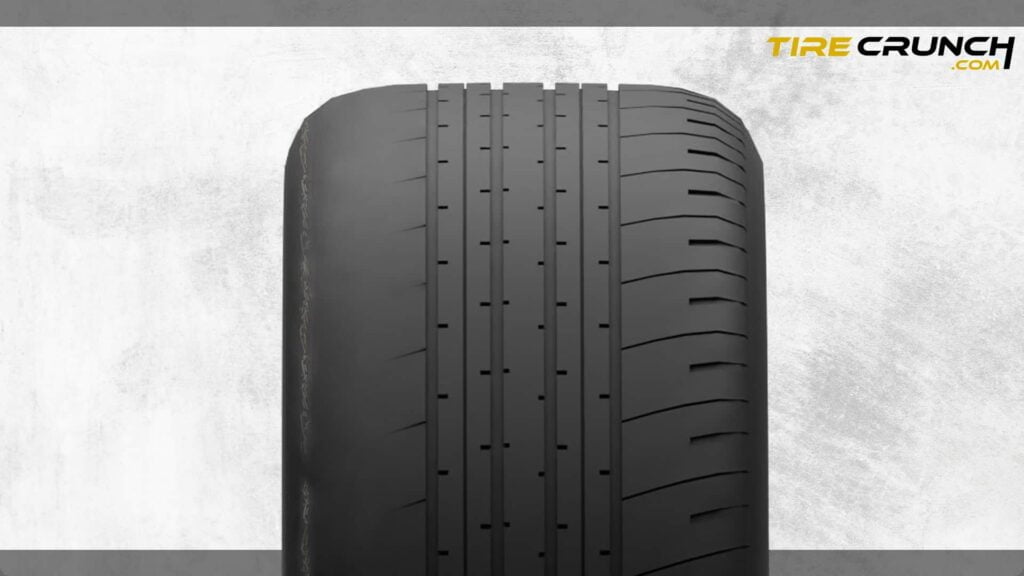
If you’ve been vigilant about checking and maintaining the proper tire pressure in your tires, yet find that the tread is worn on the sides and not down the middle, this may be an indication of a bent or worn steering arm or a car out of alignment. It’s best to have your vehicle inspected by a professional if this is the case.
3. Cupping Wear
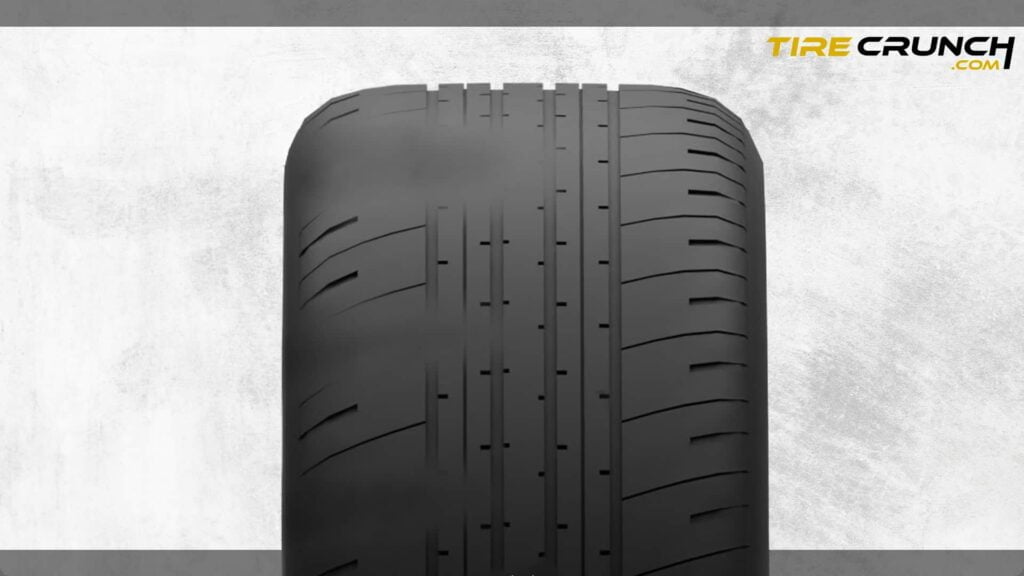
Cupping is a type of wear caused by frequent up-and-down motion, making the tire bounce while driving. This type of wear is most commonly seen on trailer tires and is usually caused by a damaged shock absorber or a worn suspension system component. It will usually appear as scoops worn into the tread of the tires, and can be both felt and seen.
4. Flat Spot Wear
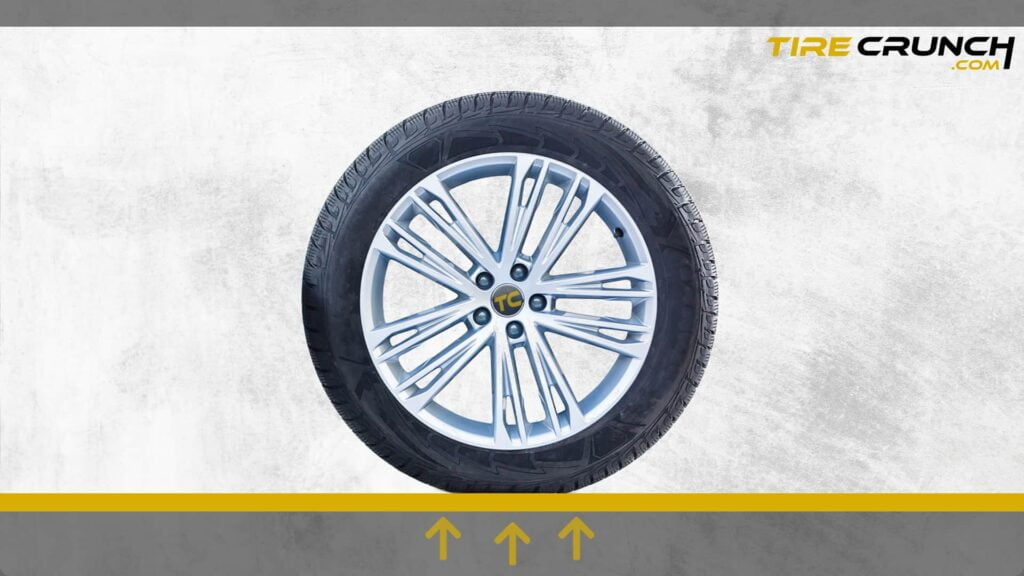
Flat spot tire wear is usually caused by aggressive or emergency braking as well as extensive parking time.
5. Sidewall Wear
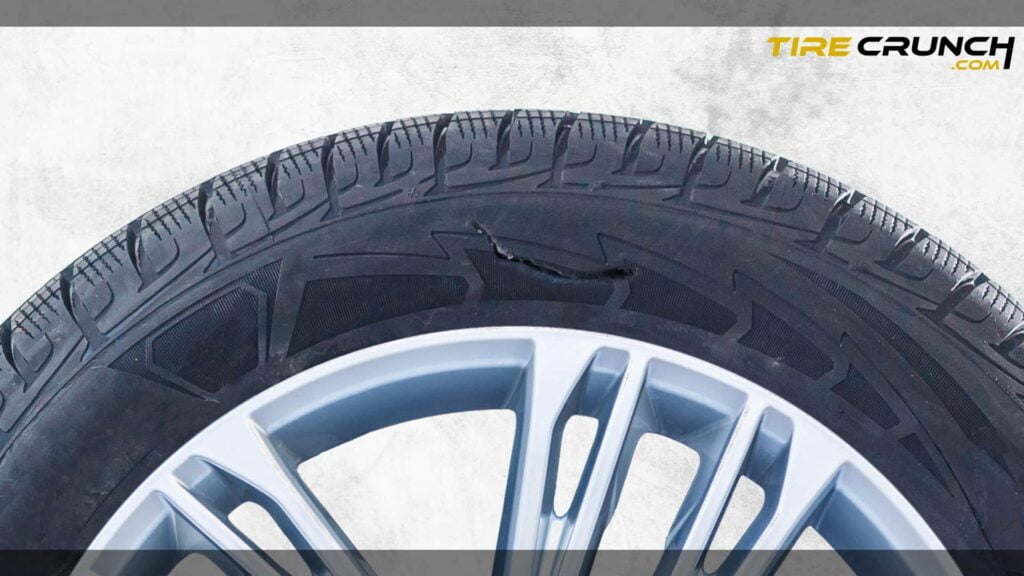
Sidewall wear can be caused by drivers who park too close to the curb, or in urban settings with street parking. In extreme cases, sidewall wear can weaken the tire’s core and cause buckling. To avoid this issue, take extra care when parking and check your tires often for signs of abnormal wear.
6. Feathering
Feathering is a type of wear that is caused by excessive toe-in or toe-out, which can usually be adjusted with a proper wheel alignment. It is harder to detect visually, but can easily be felt when you run your hands along the tread of your tire.
You may notice individual treads worn on one side and sharp on the other. In addition to misalignment, high-speed cornering could also cause feathering.
Impacts Of Uneven Tire Wear
Prevent Uneven Tire Wear
1. Regular Inspections And Maintenance
Regular tire inspections and maintenance can help prevent uneven wear, increase the lifespan of your tires, and save you money in the long run. Inspect your tires for signs of damage or irregular wear patterns at least once a month or before any long trip. Look for bulges, cracks, punctures or worn-out treads.
2. Correcting Tire Pressure
Proper tire pressure and alignment are crucial in preventing uneven tire wear. Incorrect tire pressure may cause center or outer edge wear, while misaligned wheels can result in excessive inner or outer edge wear, as well as cupping and feathering.
Interesting Fact: According to a study conducted by the Tire and Rubber Association of Canada:
3. Performing Regular Alignment
If you notice any signs of misalignment, such as uneven tread wear, pulling to one side while driving, or steering wheel vibration, immediately bring your vehicle for an alignment check-up. A professional technician will adjust the camber angle (the vertical tilt of the wheel), toe angle (the horizontal direction of the wheels), and caster angle (the forward or backward position of the steering axis) to meet factory specifications.
4. Replacing Worn Suspension Components
If the suspension components are worn out – it could lead to irregular tire wear patterns. The most common parts that tend to wear out include shocks, struts, ball joints, and control arms.
If you notice any symptoms of bad suspension like poor handling or vibrations while driving, it’s time to get them checked by a mechanic.
5. Following Proper Tire Rotation Patterns
Proper tire rotation is an important part of vehicle maintenance. It helps to extend the life of your tires and ensure that they are wearing evenly. It’s recommended to rotate your tires at regular intervals – usually every 5,000 – 7,000 miles.
6. Driving Responsibly
Heavy braking, rapid acceleration, and aggressive cornering can all cause excessive pressure on certain areas of your tires, leading to uneven wear patterns. To prevent this from happening, it’s important to drive responsibly and avoid sudden movements on the road.
7. Choosing Quality Tires
High-quality tires are designed with advanced materials and construction techniques that help them resist damage and maintain their shape even under heavy use. By investing in a set of top-quality tires for your vehicle, you can ensure that they’ll last longer and provide more consistent performance throughout their lifespan.
FAQs
What Is The Minimum Allowed Tire Tread Depth?
The minimum tire tread depth is the legal limit set by the government, which varies from one state to another. In most states, it is 2/32 of an inch or about 1.6 millimeters. If your tire’s tread wears down below this level, you risk losing grip on the road during wet or snowy conditions.
How Often Should I Inspect My Tires?
Regular tire inspections are essential to maintain the safety and longevity of your tires. It is recommended that you inspect your tires at least once a month, as well as before any long road trips. Check for signs of wear or damage, such as cuts, cracks, bulges or uneven tread wear.
In addition to regular visual checks, use a tire pressure gauge to measure the air pressure in each tire at least once a month when the tires are cold.
Can Uneven Tire Wear Be Fixed?
Yes, uneven tire wear can be fixed. The solution will depend on the severity and cause of the problem. In some cases, correcting tire pressure and alignment may be enough to prevent further damage and even out tire wear patterns.
However, more serious issues such as worn suspension components or bent wheels may require replacement to avoid safety hazards and expensive repairs in the future.
Conclusion
In conclusion, understanding and preventing uneven tire wear is crucial for ensuring the safety and longevity of your vehicle. From improper tire inflation to worn suspension components, there are numerous factors that can contribute to this issue.
However, by regularly inspecting your tires, correcting alignment and pressure issues, following proper rotation patterns, and driving responsibly on quality tires, you can reduce the risk of uneven wear and its negative impacts. Don’t wait until it’s too late – take care of your tires now so they can take care of you on the road!
